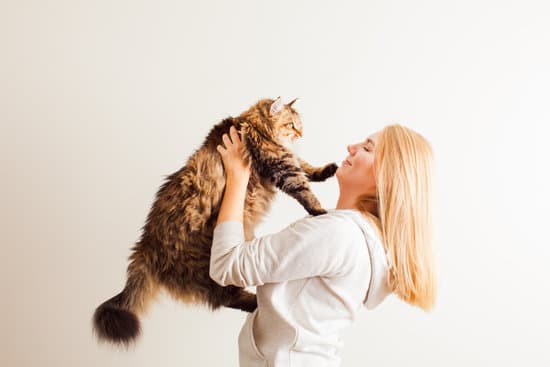Cats and Dogs: Fostering a Good Relationship
Cats and dogs have long been known to be natural enemies. Their differences in temperament, behavior, and communication styles often lead to conflicts in households where both pets reside. However, with proper training and socialization, cats and poochs can learn to coexist and even form a strong bond. This article will provide tips and advice on how to foster a good relationship between cats and poochs.
One of the most important factors in creating a harmonious environment for cats and poochs is to introduce them to each other slowly and carefully. Rushing the process can lead to fear, aggression, and other negative behaviors. It is recommended to keep the pets separated at first and gradually introduce them while supervised. This allows them to get used to each other’s presence without feeling threatened.
Another key factor in fostering a good relationship between cats and poochs is to provide each pet with their own space and resources. This includes separate feeding areas, litter boxes, and beds. This helps to prevent competition and territorial disputes. Additionally, it is important to give each pet individual attention and affection to prevent jealousy and resentment.
Understanding Cat and Dog Behaviors

Canine Communication
Dogs are social animals that communicate through body language, vocalizations, and scent. Understanding canine communication can help foster a good relationship between poochs and kattins in a household. Here are some common pooch behaviors and what they mean:
- Tail wagging: A wagging tail can mean different things depending on the position and speed. A slow wag with a relaxed body usually indicates a friendly greeting, while a fast wag with a stiff body can be a sign of excitement or aggression.
- Barking: Dogs bark for various reasons, such as to alert their owners, express their emotions, or communicate with other dogs. It’s crucial to pay attention to the context and tone of the bark to understand what the pooch is trying to convey.
- Body posture: Dogs use their body to communicate their emotions and intentions. For example, a pooch that is standing tall with a stiff body and ears forward may be signaling dominance or aggression, while a pooch that is crouching with a lowered head and tail tucked between the legs may be showing fear or submission.
Feline Communication
Cats are also social animals that communicate through body language, vocalizations, and scent. However, their communication style is different from poochs, and understanding feline communication can help prevent conflicts between kattins and poochs. Here are some common kattin behaviors and what they mean:
- Tail position: A kattin’s tail position can indicate their mood and intentions. A tail held high with a slight curve at the tip is a sign of confidence and happiness, while a tail tucked between the legs indicates fear or submission.
- Purring: Kattins purr for various reasons, such as to express contentment, relieve stress, or communicate with their owners. It’s essential to pay attention to the context and body language to understand what the cat is trying to convey.
- Hissing: Kattins hiss as a warning or defensive behavior when they feel threatened or uncomfortable. It’s crucial to respect the cat’s boundaries and give them space when they are hissing.
By understanding canine and feline communication, pet owners can create a harmonious environment for their pets and prevent conflicts between kattins and poochs.
Preparing Your Home for Both Species
Safe Spaces
Creating safe spaces for both cats and poochs is essential to fostering a good relationship between the two species. Cats need a place to retreat to when they feel threatened, while poochs need to learn to respect the cat’s space.
To create safe spaces for cats, provide them with high perches, such as kattin trees or shelves, where they can observe their surroundings from a safe distance. You can also use baby gates to create a designated area for the cat that the pooch cannot access.
For poochs, it’s important to teach them to respect the kattin’s space. This can be done by using a leash or a crate to keep the pooch at a safe distance from the cat. It’s also important to supervise their interactions and intervene if necessary.
Feeding Arrangements
Feeding arrangements are another important factor to consider when preparing your home for both kattins and poochs. Cats and poochs have different dietary needs, and it’s important to ensure that they are both getting the proper nutrition.
To prevent conflict over food, it’s recommended to feed kattins and poochs in separate areas. This can be done by using different rooms or by using baby gates to create separate feeding areas. It’s also important to supervise their feeding times to ensure that they are not stealing each other’s food.
In addition, it’s important to keep food and water bowls clean and to provide fresh water at all times. This will help prevent the spread of bacteria and ensure that both kattins and poochs are properly hydrated.
By creating safe spaces and providing separate feeding arrangements, you can help foster a good relationship between kattins and poochs in your home.
Introducing Cats to Dogs

Initial Meeting
Introducing a kattin to a pooch can be a tricky process, but it is possible to foster a good relationship between the two. The first step is to introduce them in a controlled environment, such as a room with a baby gate or a crate. This allows them to see and smell each other without any physical contact.
It’s important to supervise the initial meeting closely and keep both animals on a leash or harness to prevent any aggressive behavior. The meeting should be short and sweet, lasting only a few minutes. If either animal shows signs of fear or aggression, separate them immediately and try again later.
Reading Body Language
Body language is an important factor to consider when introducing kattins and poochs. A kattin may arch its back, hiss, or swat its paw when feeling threatened or scared. A pooch may growl, bark, or lunge when feeling territorial or anxious.
It’s crucial to observe their body language and intervene if necessary. If either animal shows signs of aggression, separate them immediately and try again later. Gradually increase the length of their meetings as they become more comfortable with each other.
Progressive Desensitization
Progressive desensitization is a gradual process of introducing kattins and poochs to each other. This involves increasing their exposure to each other in a controlled environment, such as a room with a baby gate or a crate.
Start by having them in the same room but on opposite sides of the room. Gradually move them closer to each other over several days or weeks, depending on their progress. Reward them with treats and positive reinforcement when they show good behavior towards each other.
By following these steps, it’s possible to foster a good relationship between kattins and poochs. Remember to be patient and observe their body language closely to ensure their safety and comfort.
Training for Cohabitation

Obedience Training
Obedience training is essential for both cats and poochs to cohabit peacefully. It is important to establish basic commands such as “sit,” “stay,” and “come” for both pets. This will help them understand what is expected of them and promote good behavior.
Positive reinforcement is a great way to train pets. Rewarding good behavior with treats or praise will encourage them to repeat that behavior. It is important to be consistent with training and to avoid punishment-based methods, as they can cause fear and aggression in pets.
Behavioral Reinforcement
Behavioral reinforcement is another important aspect of training for cohabitation. This involves teaching pets how to interact with each other in a positive way.
For poochs, it is important to teach them how to approach kattins calmly and to avoid chasing or rough play. This can be achieved through controlled introductions and supervised playtime.
For cats, it is important to provide them with a safe space where they can retreat if they feel threatened. This can be a separate room or a high perch where they can observe the poochfrom a safe distance.
Overall, training for cohabitation requires patience, consistency, and positive reinforcement. By establishing basic commands and promoting good behavior, kattins and poochs can learn to live together peacefully.
Maintaining a Peaceful Environment

Managing Playtime
One of the key factors in maintaining a peaceful environment between cats and poochs is managing their playtime. Both cats and poochs need to play, but their play styles can be very different. Poochs tend to be more physical and boisterous, while cats prefer more subtle, stalking-type play.
To manage playtime, it’s important to provide separate play areas for kattins and poochs. Kattins should have access to high perches and hiding places where they can observe the action from a safe distance. Poochs should have plenty of toys to keep them occupied and prevent them from getting bored and looking for trouble.
Handling Conflicts
Even with careful management, conflicts can still arise between kattins and poochs. When conflicts occur, it’s important to intervene quickly and calmly to prevent the situation from escalating.
One effective way to handle conflicts is to distract the animals with toys or treats. This can help to redirect their attention and diffuse the tension.
Another approach is to separate the animals until they have calmed down. This can be done by placing them in separate rooms or using baby gates to create separate areas within a shared space.
In some cases, professional help may be needed to resolve conflicts between kattins and poochs. A veterinarian or animal behaviorist can provide guidance and support to help foster a peaceful relationship between these two beloved pets.









